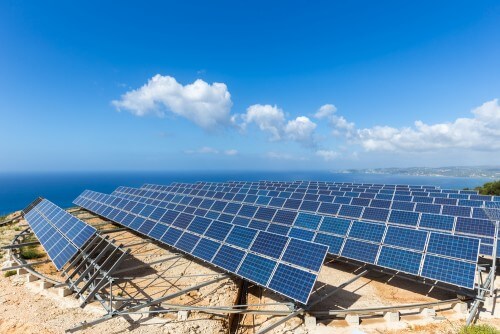Researchers at Ben-Gurion University of the Negev and the Technion believe that an innovative light trap enables a 30% increase in energy production from extremely thin solar cells

Researchers at Ben-Gurion University of the Negev and the Technion believe that an innovative light trap enables a 30% increase in energy production from extremely thin solar cells. The method was developed for cells based on hematite (a type of iron oxide) designed to produce hydrogen from water, but is also suitable for other types of cells. The method uses only simple optical means, a fact that adds to its sustainability and economic viability.
The research was carried out as part of a collaboration between Prof. Avner Rothschild from the Department of Materials at the Technion and Dr. Avi Niv from the Alexander Yarsin Department of Solar Energy and Environmental Physics at the Yaakov Blaustein Desert Research Institute.
The findings were recently published in the Journal of Materials Chemistry A
"Finding a way to utilize beam optics for extremely thin cells, as we have done here, could be a significant point for future solar cells," says Dr. Nieve. One of the ways in which the economic efficiency of solar cells can be increased is by using thinner light-absorbing layers, which are the part of the cell that converts light into electricity. The challenge is to refine the absorbing layer but maintain a significant value of the total absorption of the cell. For this purpose there are methods for capturing light. The trapping of light inside the cell results in a longer optical path which also results in greater absorption. For more than four decades, improvement in capture methods went hand in hand with thinner cells that were therefore cheaper and more energy efficient.
The next generation of solar cells is required to produce more energy at a lower cost. One of the ways to meet these requirements is by examining active layers whose thickness does not exceed the wavelength of sunlight itself, which does not allow the use of ray-based capture. That is why light capture methods based on the wave nature of light have been developed in recent years. Despite the great development made in the subject, these methods still do not compete with methods based on rays from an applied point of view. Therefore, the researchers returned to ray optics and managed to develop a method that combines ray-based confinement with wave absorption of the light. This was achieved by creating a structural separation between the confinement and engulfment sites within the cell. The light is first captured in a thick layer without losses which then feeds the absorption in the active layer whose thickness is less than the wavelength. In this way the researchers demonstrated an increase of more than 30% in the power of the cell. The researchers also predict that an increase of 40% or more can be obtained in practice with this method.

5 תגובות
Quantum pit trap is a research topic chewed from 1990. I appreciate that the noise is too big here. The subject has been studied by at least dozens of research teams in the world.
I didn't really understand the explanation. But if there is a "no loss" layer in nature, then I'm a chicken. In my opinion, any theoretical calculation that relies on some "lossless" stage is prone to failure in implementation (especially when the "lossless" stage is repeated many times). So let's build one cell first and we'll see. I wish, as Nostradamus said. Besides, what's the deal with "ray-based capture"? Light is wave in propagation and particles in absorption. Maybe they mean their calculation methods, i.e. RAY TRACING, or they just can't explain what they mean.
Twice a month there is an article on increasing the utilization of solar cells and once a month an article on limiting the utilization of lithium batteries.
As usual, we are 5-10 years from an efficient solar panel or high utilization lithium battery (and as always, 20 years from cold fusion).
Probably a combination of a lack of long-term planning, ISIS, and the energy independence of the US and China, will do a more effective job of subverting the Arab countries than a solar panel, however effective it may be.
Really happy news, but I've already read so many news here about breakthroughs in increasing the efficiency of solar cells that I don't know how to relate to the above news... I wish this technology would already replace the use of oil and gas, we'll see the Muslim countries manage without their damn oil...
If Israel is responsible for the economic collapse of the Arab countries, it will be poetic justice